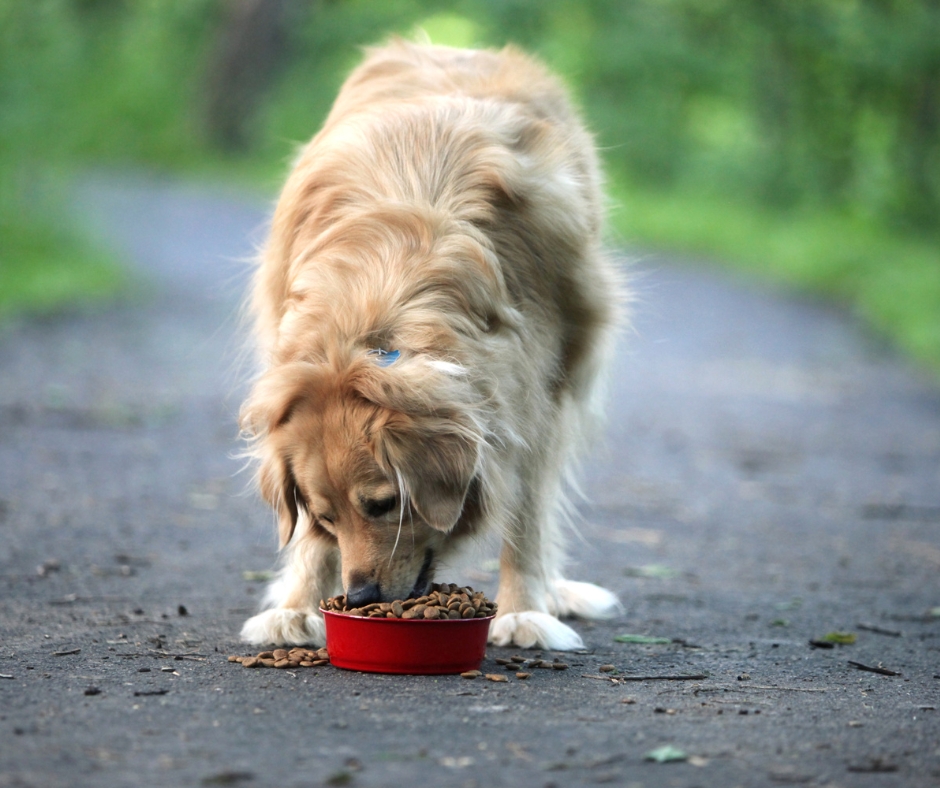Switch to Adult Dog Food: Essential Timing Tips when your dog is 12 to 18 months old. This depends on breed and size.
The timing of your dog’s transition to adult food is crucial. Puppy food has higher levels of growth-promoting elements. As your dog ages, their nutritional needs change. Compared to large breeds, little breeds often mature faster. Smaller dogs may transfer at 12 months, while larger breeds may wait until 18 months.
If you transition at the appropriate time, your dog will get the nutrition they need. For particular advice, see your veterinarian. Observing your dog’s growth and health can help you decide when the move is most appropriate. A nutritious diet supports long-term health and wellbeing.
Signs That Your Dog Is All Set
Knowing when to switch to adult dog food: Essential Timing Tips is crucial. By recognizing the signs, you may safeguard their development and welfare. When your dog is ready to consume adult food, these are signs.
Body Maturity
Puppies grow at different rates depending on their breed. Little breeds grow more fast than large dogs. Watch out for these signs of physical maturity:
- Your puppy is now a fully fledged adult.
- They have adult-type teeth.
- Their growth plates are closed.
Behavioral Changes
Changes in a child’s behavior might indicate that they are ready for adult meals. The primary indicators are as follows:
- The playfulness of your pet has diminished.
- They have more consistent energy levels.
- Your dog begins to mark his territory.
| Breed Size | Age to Switch |
|---|---|
| Small Breeds | 9-12 months |
| Medium Breeds | 12-15 months |
| Large Breeds | 15-18 months |
The Nutritional Needs of Adult Dogs
You need to switch to adult dog food: Essential Timing Tips for your dog’s health. Adult dogs have different nutritional requirements than puppies. Understanding their needs is essential to preserving their health.
Needs for Nutrition
Compared to adults, puppies need more calories. Due to their rapid development, puppies need more energy. Adult dogs need enough calories to maintain their weight and level of activity.
- Small breeds: 40 calories per pound.
- Medium breeds: 30 calories per pound.
- Large breeds: 20 calories per pound.
Because overfeeding may lead to obesity, pay attention to portion sizes.
Important Components
Adult dogs need to eat a well-balanced diet that includes essential nutrients. These nutrients include:
- Proteins: For muscle maintenance and repair.
- Fats: Give you energy and support the health of your skin and coat.
- Carbohydrates: Give you energy and fiber for digesting.
- Vitamins: Support physiological functions and overall health.
- Minerals: Help maintain strong bones and other bodily functions.
If you feed your dog a balanced diet, they will stay active and healthy.
| Nutrient | Importance |
|---|---|
| Proteins | Muscle maintenance and repair |
| Fats | Energy, skin, and coat health |
| Carbohydrates | Energy and fiber |
| Vitamins | Overall health |
| Minerals | Bone health |
Look closely at the label of the dog food. Look for meals that follow AAFCO regulations. This ensures your adult dog gets the nourishment they need from the meal.
Transitioning from a puppy to an adult diet
For your pet, switching from puppy food to adult dog food is a significant step. This change needs careful thought. Puppies have different dietary demands and grow more fast than adult dogs. If you move at the right moment, your dog will stay healthy and content.
Gradual Process
The easiest way to transition from puppy to adult diet is to do it gradually. Unexpected changes may upset your dog’s stomach. Follow these guidelines to guarantee a smooth transfer:
- Start by mixing 25% adult food with 75% puppy food.
- Gradually increase the adult food to 50%, then 75%, and finally 100% over a week.
Making this change gradually will help your dog’s digestive system adjust to the new food.
Seeing Reactions
Throughout the transition, it’s critical to monitor your dog’s reactions. Keep an eye on their feces, energy levels, and coat condition. If you have any stomach issues or discomfort, you should slow down the transition.
- If your dog has diarrhea, cut down on adult food.
- Watch for any allergic reactions, such as itching or redness.
- Look at their liveliness and overall attitude.
By regularly examining these factors, a smooth transition may be guaranteed.

Choosing the Right Adult Dog Food
The change Switch to adult dog food: Essential Timing Tips is crucial for your dog’s health. As your dog gets larger, their nutritional needs will change. Choosing the right adult dog food helps keep your companion happy and healthy. You will get guidance on key considerations in this area.
Ingredients to Take Into Account
High-quality protein sources are essential for adult canines. Look for recipes where the main ingredient is either lamb, beef, or chicken. These proteins help maintain muscle mass and overall strength.
Whole grains that provide vital energy include brown rice and oats. They are easier for your dog to consume and balance their energy levels.
Make sure your dog eats a lot of fruits and veggies. Foods high in vitamins and antioxidants include carrots, spinach, and blueberries. They support your dog’s immune system and overall wellness.
Healthy fats are also vital. Look for options like fish oil or flaxseed. These fats support a shiny coat and healthy skin.
Avoid Using Hazardous Additives
Dog food isn’t all created equal. Avoid foods that include artificial preservatives like BHA, BHT, or ethoxyquin. These drugs have the potential to become harmful over time.
Avoid artificial colors and flavors. These additives have no nutritional value and may cause adverse reactions.
Avoid foods that are high in fillers, such as wheat, soy, or maize. These ingredients may lead to digestive issues and have little nutritional value.
Look for by-products on the label. Avoid goods that mention generic animal byproducts. These may be detrimental to your dog’s health and are often of low quality.
| Nutrient | Examples |
|---|---|
| Protein | Chicken, Beef, Lamb |
| Whole Grains | Brown Rice, Oats |
| Fruits and Vegetables | Carrots, Blueberries, Spinach |
| Healthy Fats | Fish Oil, Flaxseed |
If you feed your dog the right food, they will live a long, healthy life.
Modifications to the Feeding Plan
Switching to adult dog food is a significant step. Making changes to your dog’s feeding schedule is essential. This ensures that they get the right nutrients at the right time.
Regularity of Meals
Adult dogs need less food than puppies. Puppies usually eat three or four times a day. Adult dogs benefit from two meals every day. A consistent regimen might help them maintain their energy levels.
Regulation of Portion Size
Portion control is crucial for your adult dog’s health. Overfeeding may lead to obesity. Underfeeding may lead to nutritional deficiencies. Refer to the feeding guidelines on the dog food packaging. Adjust for your dog’s weight and activity level.
| Dog Weight | Daily Food Amount |
|---|---|
| 10-20 lbs | 3/4 – 1 1/2 cups |
| 20-40 lbs | 1 1/2 – 2 1/2 cups |
| 40-60 lbs | 2 1/2 – 3 1/2 cups |
| 60-80 lbs | 3 1/2 – 4 1/2 cups |
- Monitor your dog’s weight regularly.
- Adjust portions if needed.
- Consult your vet for specific advice.
Common Mistakes To Avoid
The switch to adult dog food: Essential Timing Tips is an important phase in a dog’s life. To ensure a smooth and beneficial transition, common mistakes must be avoided. This section highlights the errors to avoid for the health of your dog.
Overfeeding
Overfeeding your dog may lead to obesity and other health issues. Contrary to popular belief, adult dogs do not need extra food. Dogs of different ages need different amounts of calories. Observe the dog food container’s feeding guidelines. Use a measuring cup to ensure you provide the right amount. Using a feeding plan might help you manage your dog’s diet.
Ignoring Age-Specific Needs
Adults and puppies need different diets. Ignoring these criteria might have a negative impact on their health. Adult dog food is made to meet these specific requirements. Puppies need diets strong in protein and calories to develop. Adult dogs need a balanced diet to maintain their health and energy. Consult your veterinarian to find out what food is best for your dog’s size and age.
Talking to Your Veterinarian
It’s a significant step to start feeding your dog adult food. Consultation with your veterinarian ensures a smooth and healthy transition. Your veterinarian provides knowledgeable guidance based on the specific needs of your dog.
Professional Advice
Veterinarians can provide expert advice on what to feed your dog. Among the factors they consider are breed, size, and health. This makes it easier to choose the right adult dog food. Additionally, veterinarians could recommend certain brands or goods.
Medical Examinations
Regular checkups are vital for your dog’s health. These visits let you monitor your dog’s growth and development. Veterinarians assess your dog’s weight, dental condition, and overall health. They determine when it’s appropriate to begin eating adult food.
| Factor | Consideration |
|---|---|
| Breed | Different breeds mature at different rates. |
| Size | Large breeds may need different nutrition than small breeds. |
| Health Conditions | Specific health issues might require special diets. |
- Monitor growth: Regular veterinarian examinations let you monitor your dog’s progress.
- Dental health: Keeping teeth in good condition may have an impact on dietary choices.
- Weight assessment: Efficient weight management helps with food selection.
Monitoring the Health of Your Dog
It’s important to monitor your dog’s health in order to ensure a smooth transition to adult dog food. Making decisions is made easier when one is aware of critical health markers. Some important considerations are as follows:
The Managing Weight
Adult dog food helps maintain a healthy weight. Puppies need more calories to develop. Overfeeding may cause adult dogs to grow fat.
| Age | Calories per Day |
|---|---|
| Puppy | 800-1200 |
| Adult | 500-800 |
Check your dog’s weight on a regular basis. You may use a scale or go to the vet. Adjust meal amounts based on age and level of physical activity.
Energy Levels
Your dog’s energy levels change as they age. Because they are more active, puppies need more energy. Adult dogs need food that is suitable for their activity level.
- If your dog isn’t as active, cut down on calories.
- For an energetic dog, choose a food with more protein.
Every day, check your dog’s energy levels. Are they cheerful or lethargic? To satisfy their energy needs, modify their food.

Frequently Asked Questions
When Should I Switch to Adult Dog Food?
It’s time to switch to adult dog food when your dog is 12 months old. However, large breeds may need to wait till 18 to 24 months.
What Indicates the Need for Adult Food for My Dog?
Indicators include slower growth and a less playful demeanor. Your veterinarian may also provide guidance based on your dog’s size and breed.
Can I Switch Too Early and Hurt My Dog?
Yes, switching too quickly might lead to vitamin deficits. Puppies need certain nutrients for growth and development.
What Are the Benefits of Adult Dog Food?
For maintenance and health, the nutrients in adult dog food are balanced. It enhances overall wellness, energy levels, and weight management.
In Conclusion
For your dog’s development and welfare, switching to adult dog food is crucial. Talk to your veterinarian and monitor their progress. Make the switch gradually to avoid gastrointestinal issues. A good diet ensures a happy and healthy adult dog. Make the shift when it’s most beneficial for your health and life.










